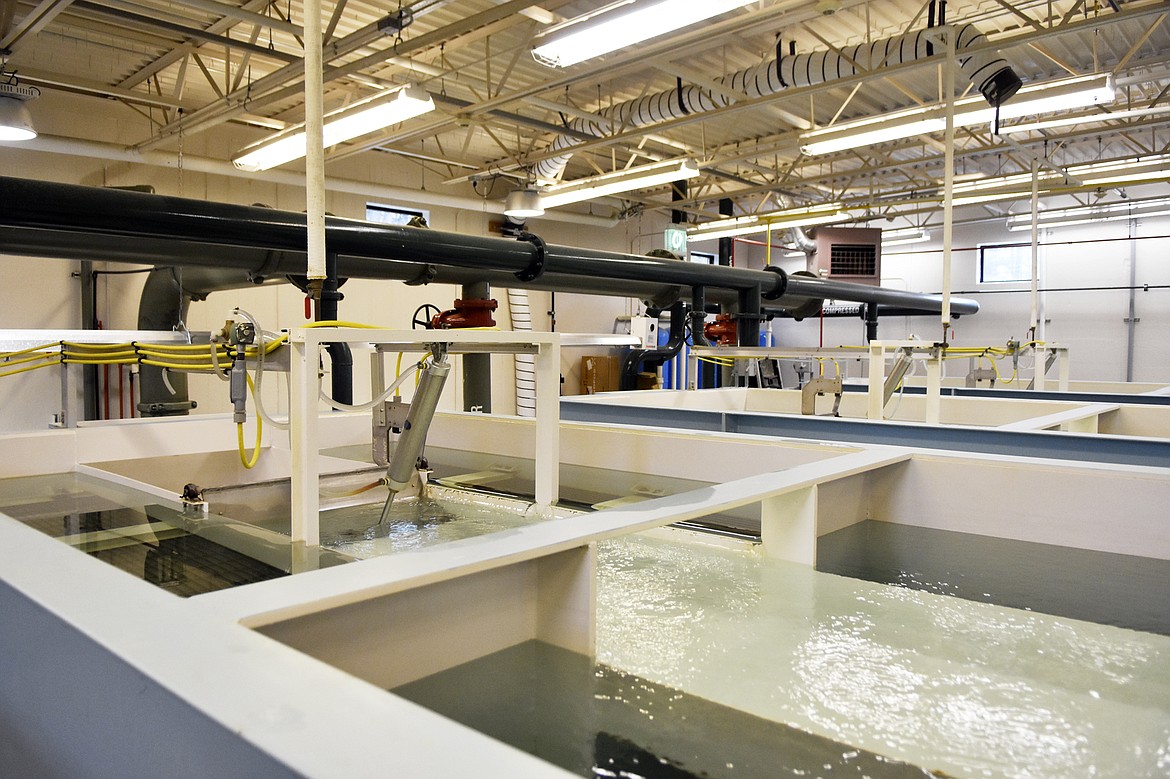Designs put water treatment plant cost at $9.86 million
Designs for the expansion of the city’s water treatment plant are more than halfway complete and the estimated cost for the project sits at $9.68 million.
The City of Whitefish is being required by the state to complete the upgrade to increase its water treatment capacity at the plant. Construction for the project is expected to begin this summer.
For the past two summers, the water demand in the city has exceeded the current capacity of the plant, according to Jeff Ashley, of Morrison-Maierle, the city’s engineer for the project.
“The emphasis is getting your [treatment] capacity increased,” Ashley said. “Your growth has exceed your capacity. The facility is 20 years old and is currently in terrific shape.”
The Montana Department of Environmental Quality last spring began prohibiting any new water extension or connections due to concerns that the city was approaching its threshold for water storage and water source treatment capacity. In August, DEQ granted the city a deviation variance that allows new water connections again while the city works to increase its water system capacity.
Public Works Director Craig Workman said the deviation process allows the city the time it needs to expand the plant.
“The deviation process allows us the time to add to the plant,” he said. “We’re keeping track of all new connections for water.”
Morrison-Maierle expects to have plans for the plant submitted to DEQ by the end of next month and then once it’s permitted bidding could begin as soon as May with a contractor on site in August. Construction is anticipated to be completed in May 2021.
Whitefish operates what’s termed as 3 million gallons of firm capacity water treatment plant that treats water drawn from Second and Third creeks in Haskill Basin and during peak usage times from Whitefish Lake.
The expansion will add two additional 1 million gallon per day treatment systems, bringing the plant’s firm treatment capacity to 5 million gallons per day, which is calculated with one filter taken out of service.
City Manager Dana Smith says previous rate adjustments to the water utility have factored in the expansion costs.
“Rates will not have to increase with this plant construction,” she said.
The city is still looking at options for obtaining grants to assist with the project, Workman also noted.
Ashley said that cost estimate includes a “healthy” contingency to make sure it’s on the high side, and that as the design is further refined the estimate will become further refined.
The project calls for expanding the water treatment plant building by about 4,000 square feet. This will allow for the current upgrades, but also those expected in the future.
“We want the building to be built big enough for future expansion that would allow you to essentially double your treatment capacity from what it is now,” Ashley said. “If we set the building up now it will provide the easiest expansion that may come in the future.”
The current project includes the additional treatment capacity, increasing the pumping capacity of the plant, a new plant control system and increasing the intake capacity of the Whitefish Lake intake.
Morrison-Maierle’s designs also plan for space in the building for two additional treatment filters, adding a UV disinfection system to the plant and increasing the distribution pumping capacity. Those upgrades down the road, along with related projects, are estimated to cost an additional $2.86 million.
Workman said the city treats its water now with chlorine, but that requires contact time with the water, and in the future when demand for water increases it won’t be able to produce water fast enough by treating it with chlorine thus it will need to use UV treatment as well.
A year ago, the city began a feasibility study looking for a ground water source. Initial findings show groundwater to be a viable source for potable water for the city and that investigation continues.
Workman said the water plant only hits its firm capacity for treatment in the summer peak.
“Future expansion of the plant could be pushed farther down the road, if we are able to groundwater to our system,” he said. “Groundwater only has to be chlorinated and doesn’t have to go through the full treatment system. Currently, 100 percent of our water has to go through the treatment at the plant.”


